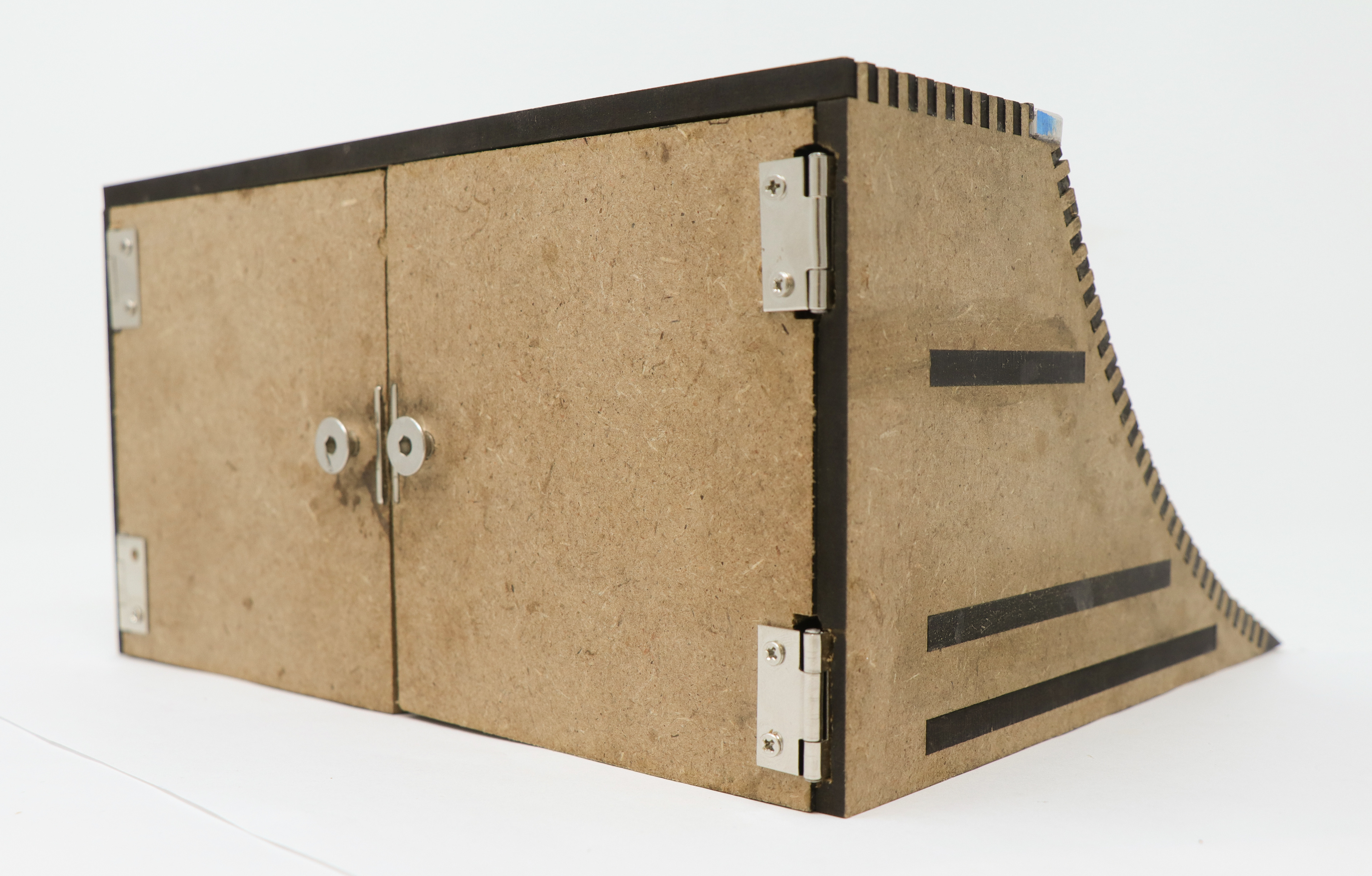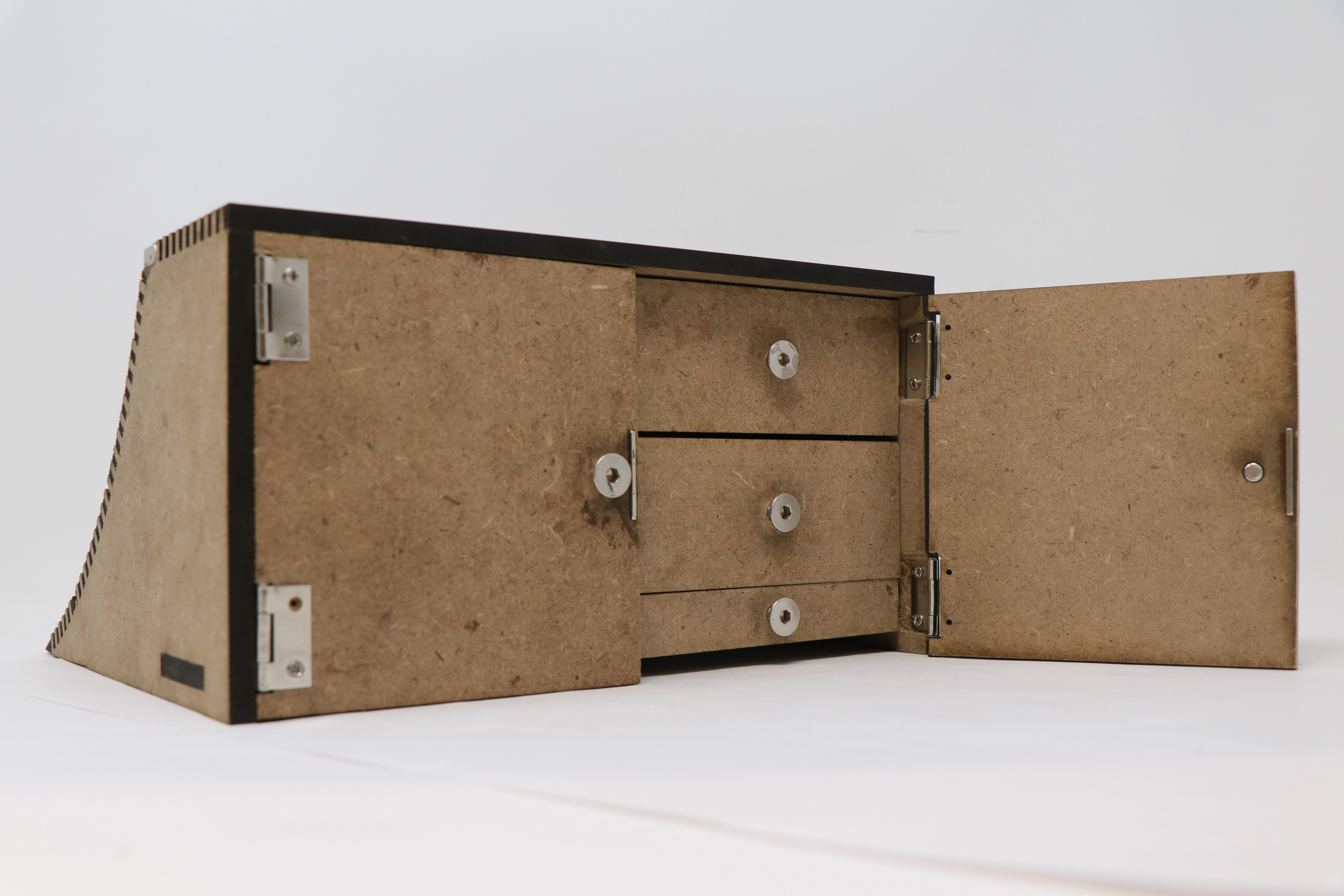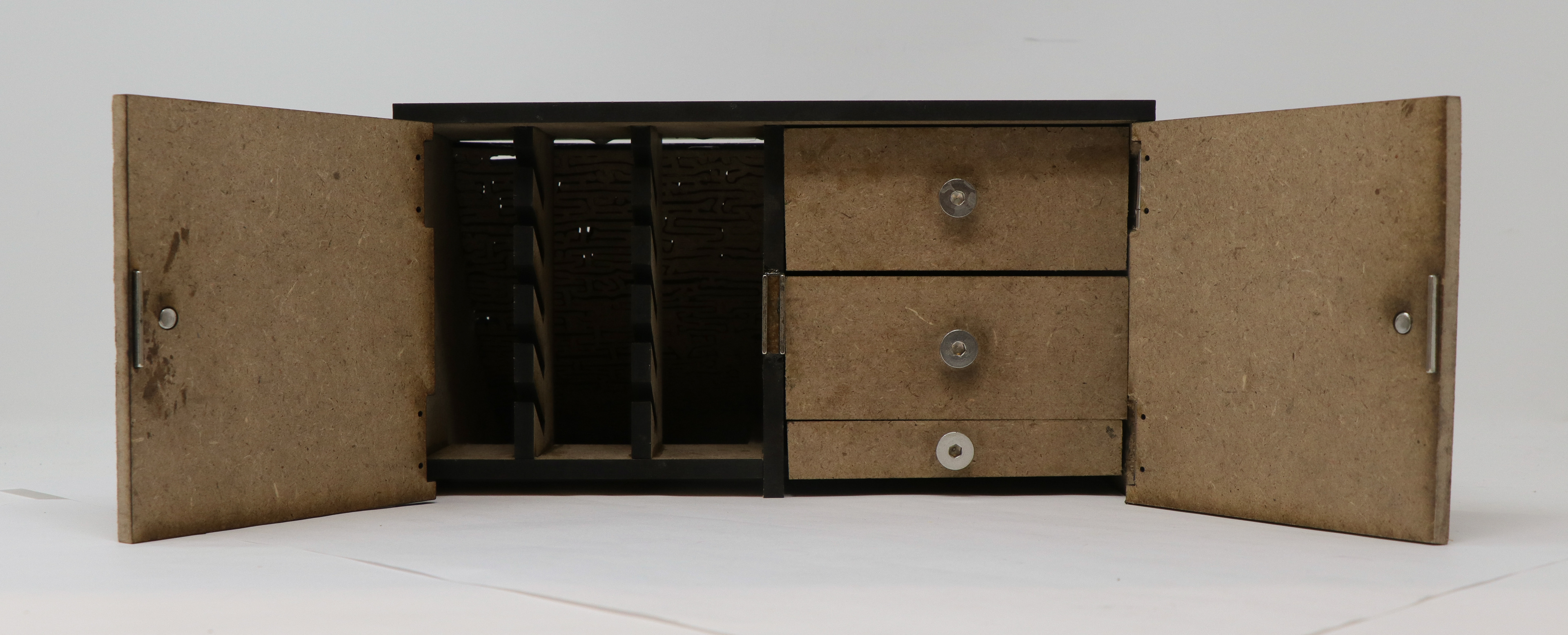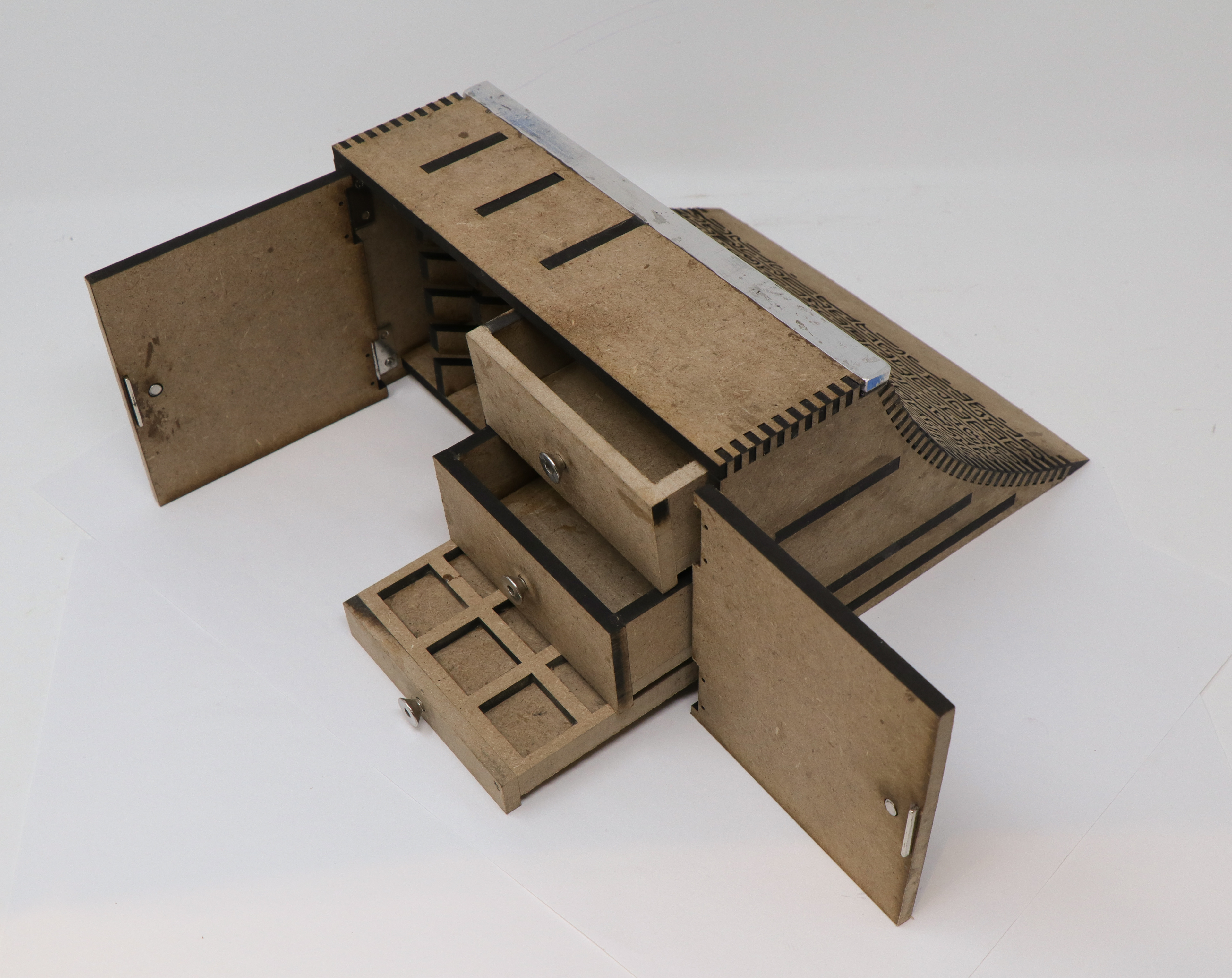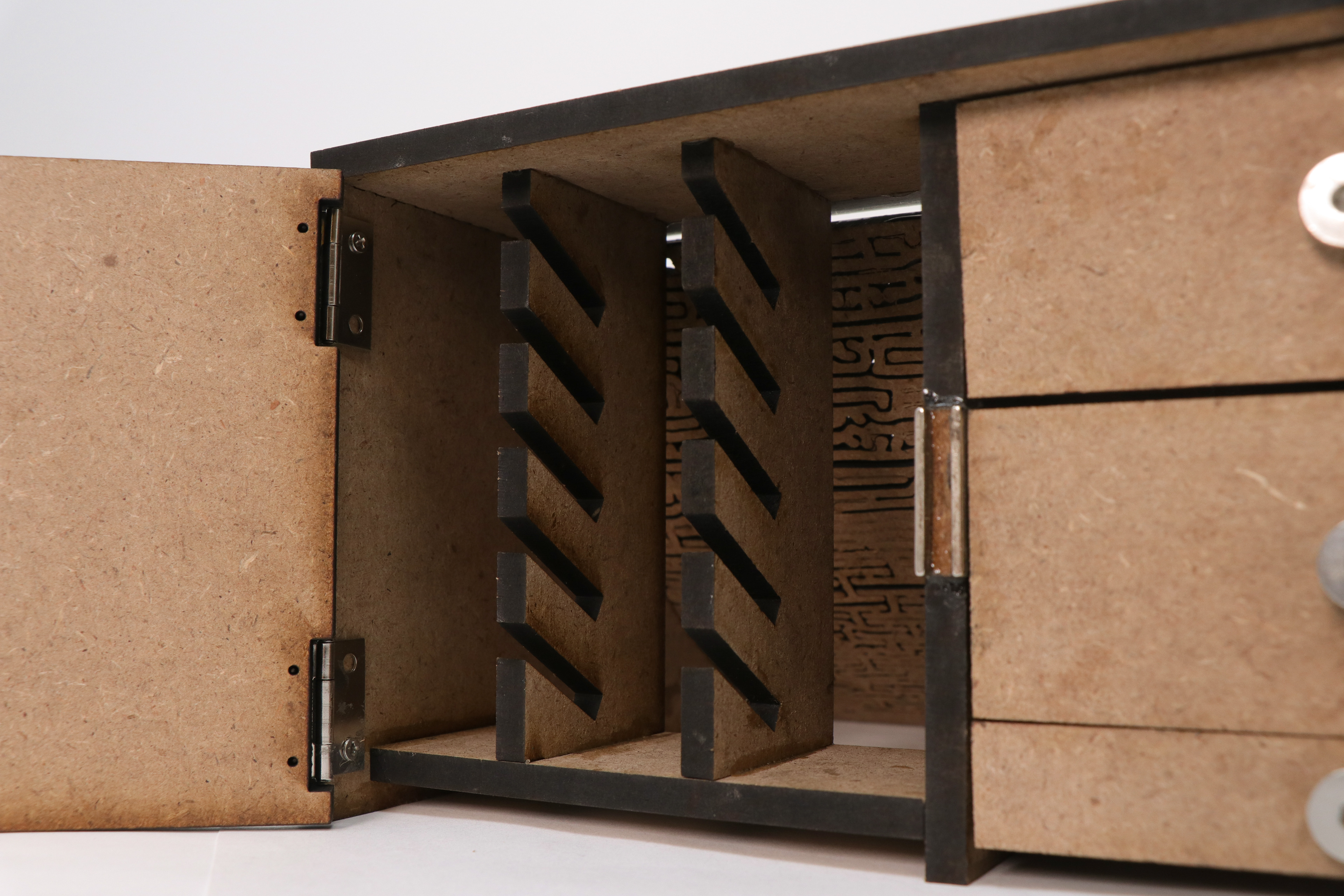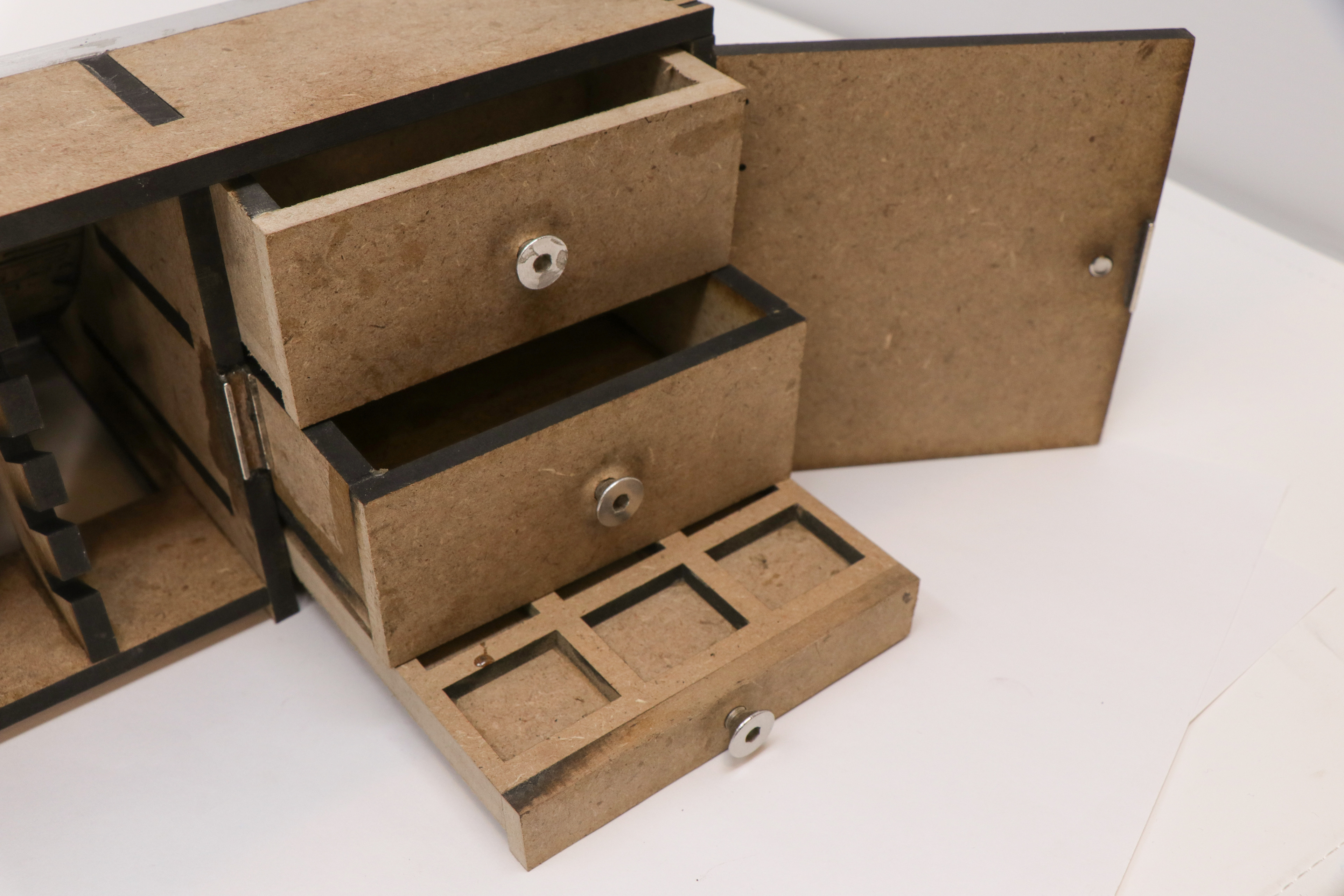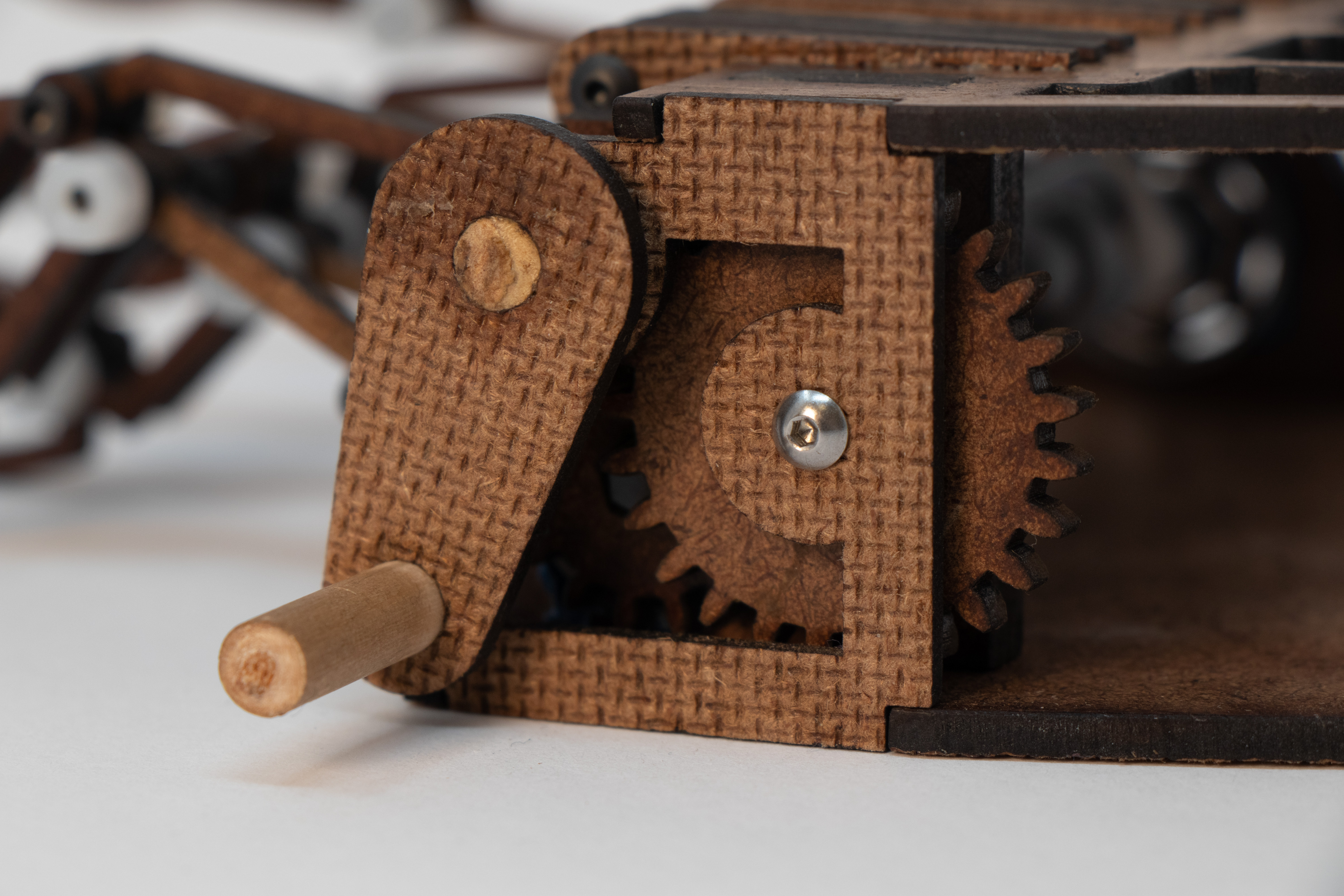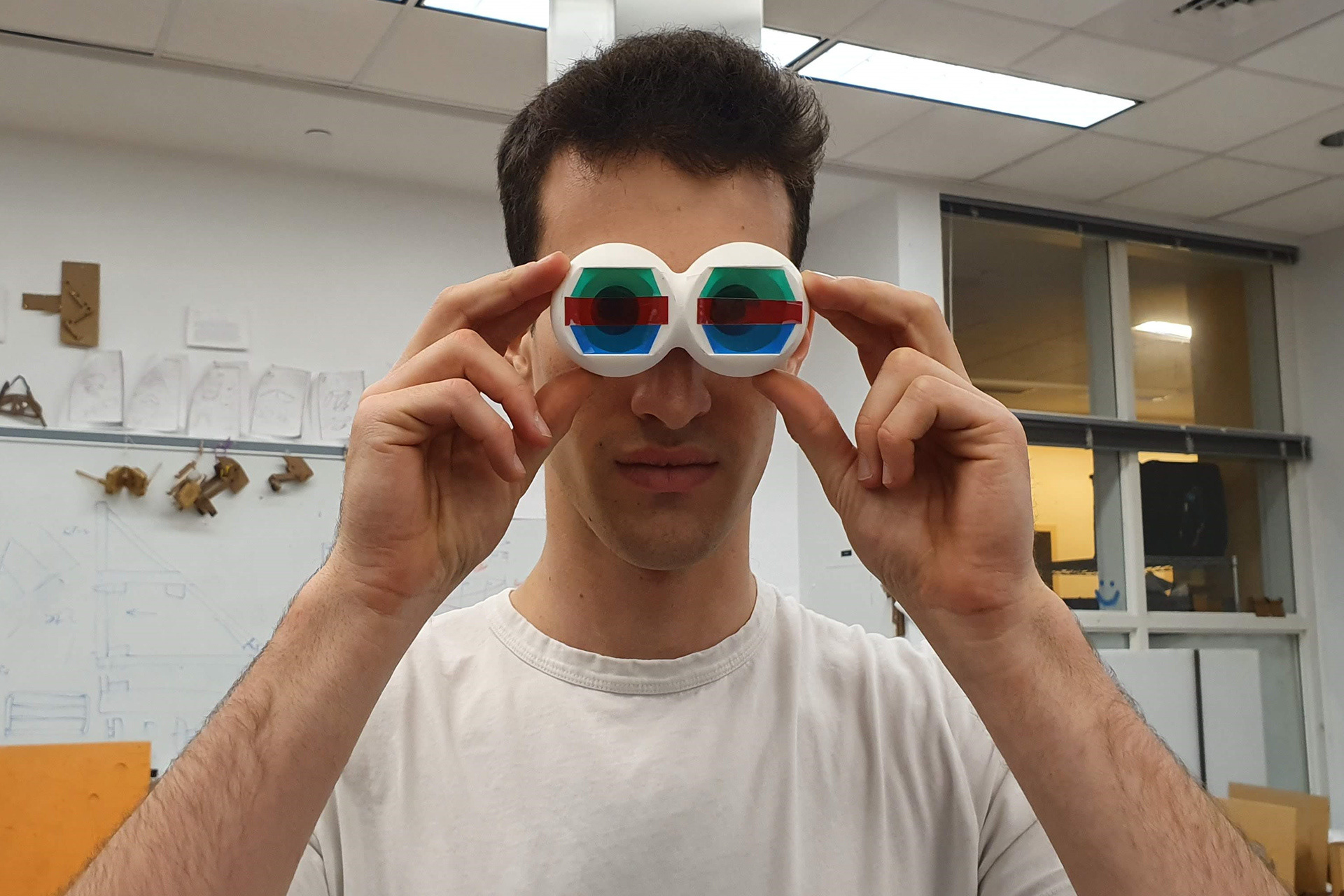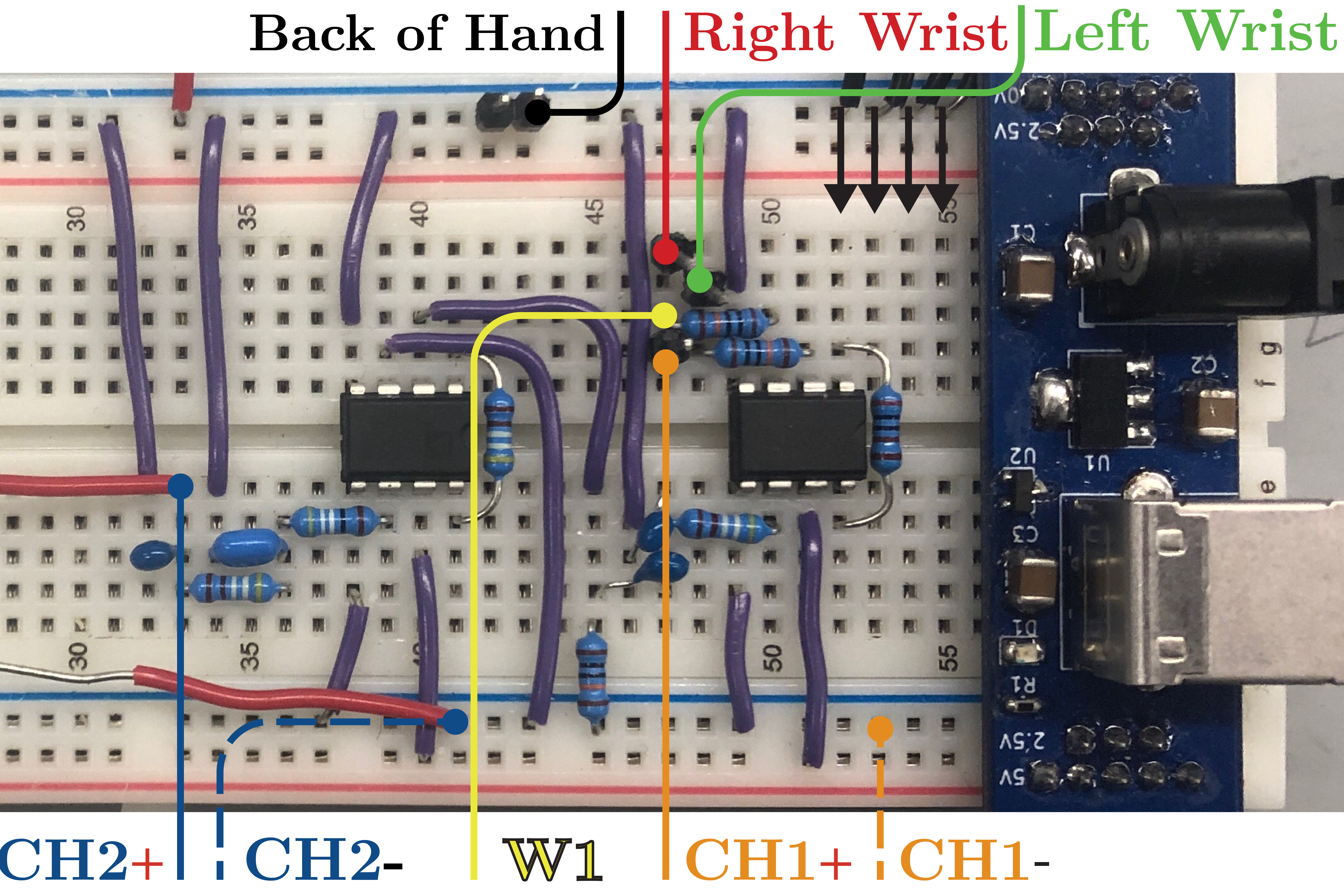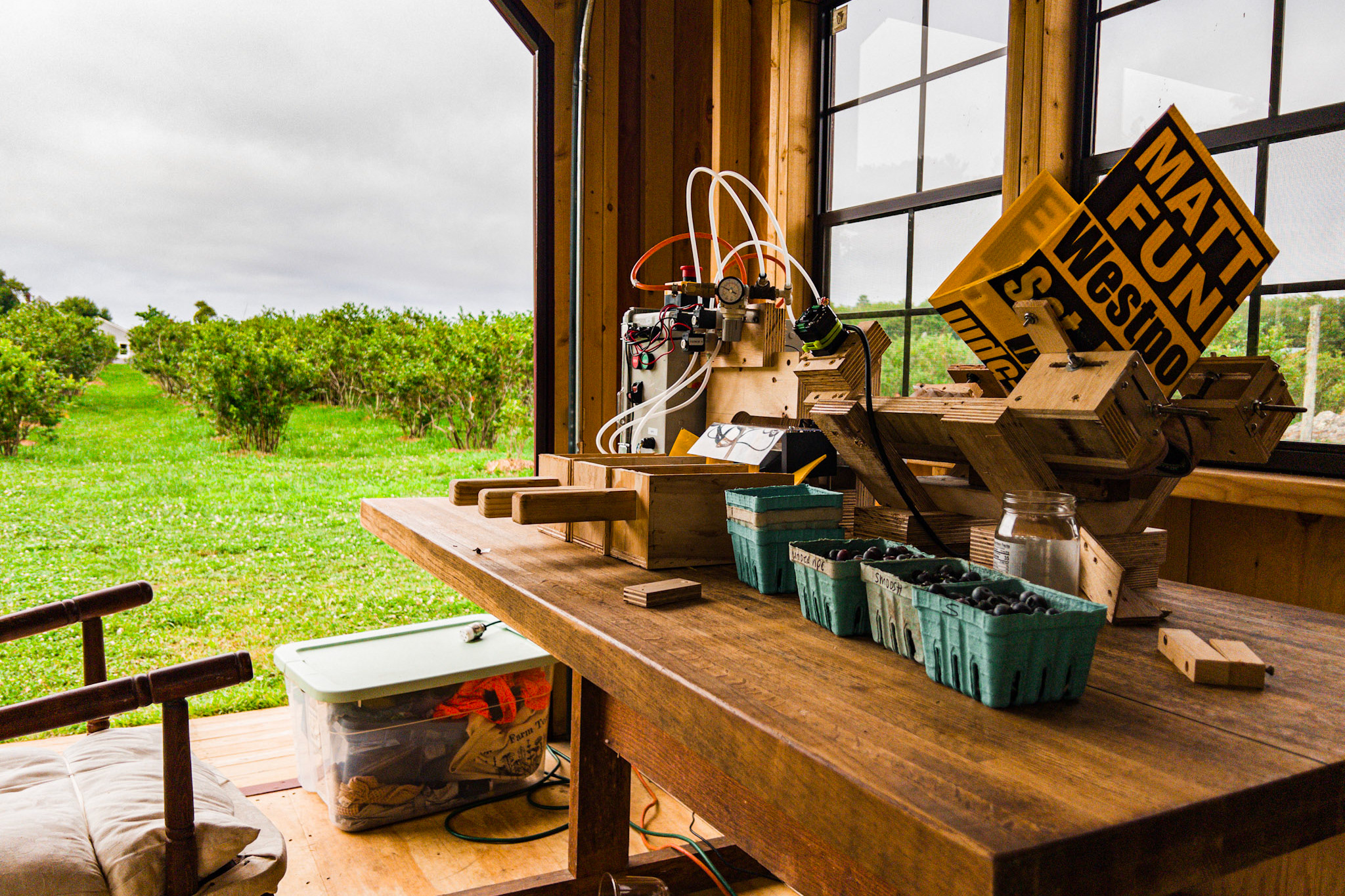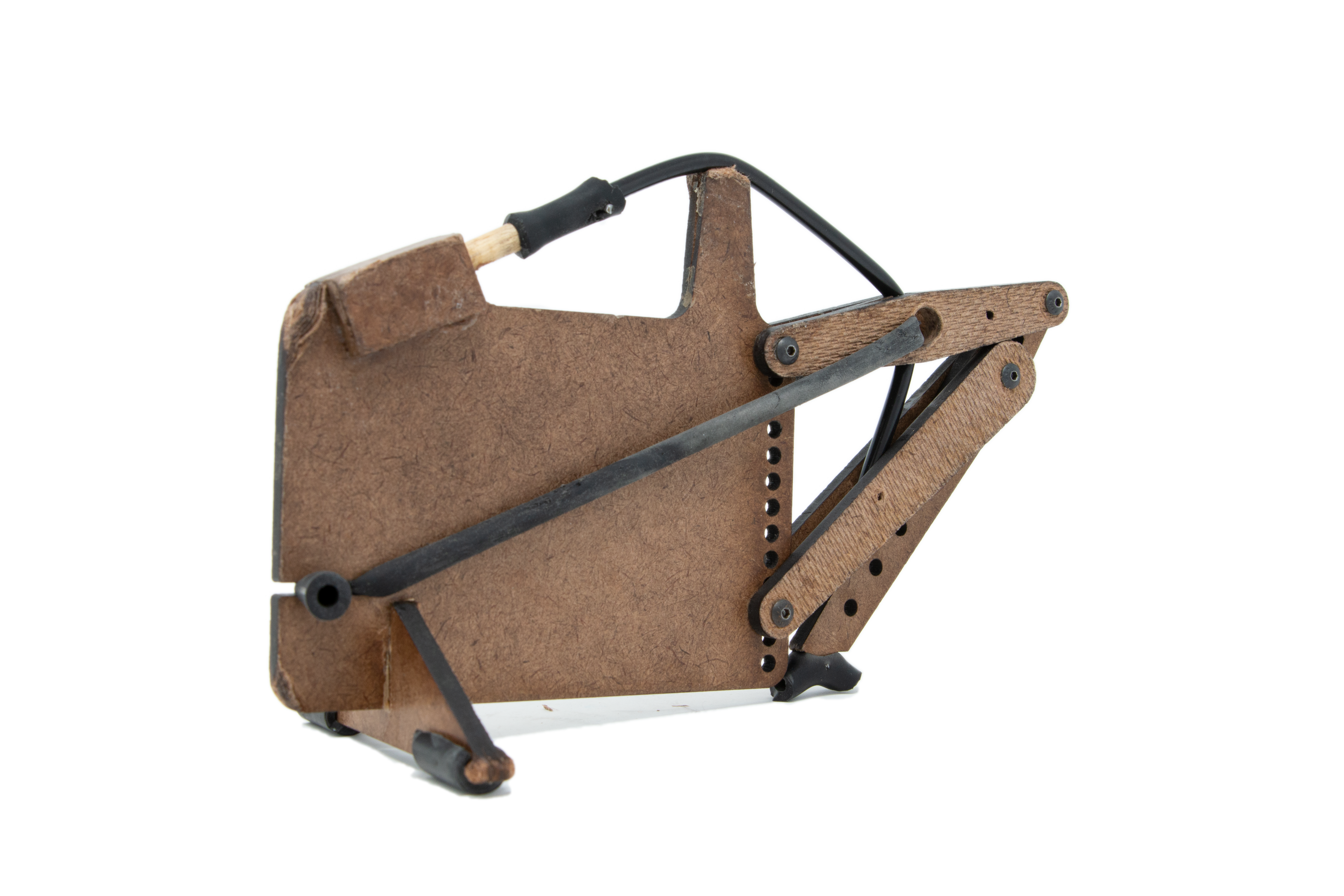This project was built independently, for the class Mechanical prototyping in spring 2020.
The project criteria:
- To create a "box" representing somewhere special to you
- To be entirely manufactured from 0.25" MDF, using laser cutting and simple fasteners
- To incorporate 5 novel fastening methods
- To design, prototype, build, and document in 2 weeks
I grew up skateboarding, and loved to fiddle with finger sized ones. I decided to build a box that younger me would have loved to have to keep his collection of fingerboards and tiny parts, and to remind me of the ramps In the skate park I spent so many hours in.
I started with a sketch to layout the form and functional components. The box is a scale model of a quarter pipe ramp, with 3 drawers for parts, and a rack to store miniature skateboards.
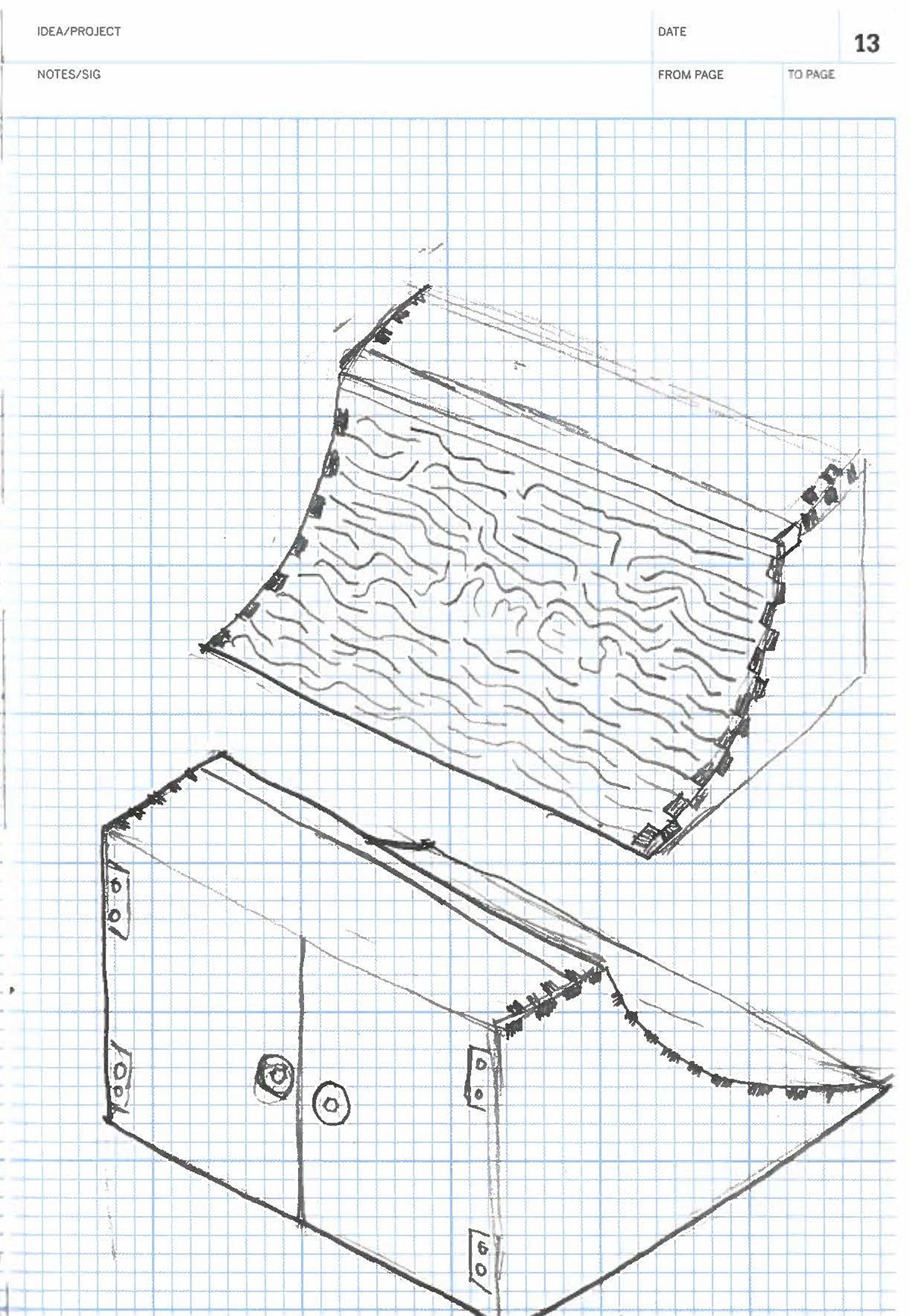

I have a constant fascination with artificial growth, for aesthetics and functionality.
The core of the design hinged on taking solid sheet and bending it on a smooth ramped curve. while there are many traditional living hinge patterns, I wanted to explore a more organic look, and hide my name within it.
Using a Photoshop script I developed, I modeled a real chemical phenomenon known as reaction diffusion to grow the hinge pattern. Areas of black grow and diffuse without intersecting, creating a dense organic maze that remains structurally one piece.
I tested the pattern on a smaller scale to make sure it would bend the way I wanted. I found out the removing the kerf material, while tedious, was quite satisfying.
I modeled the entire box in solid works, using a master sketch and split-body assembly approach.
The key fastening methods are labeled below
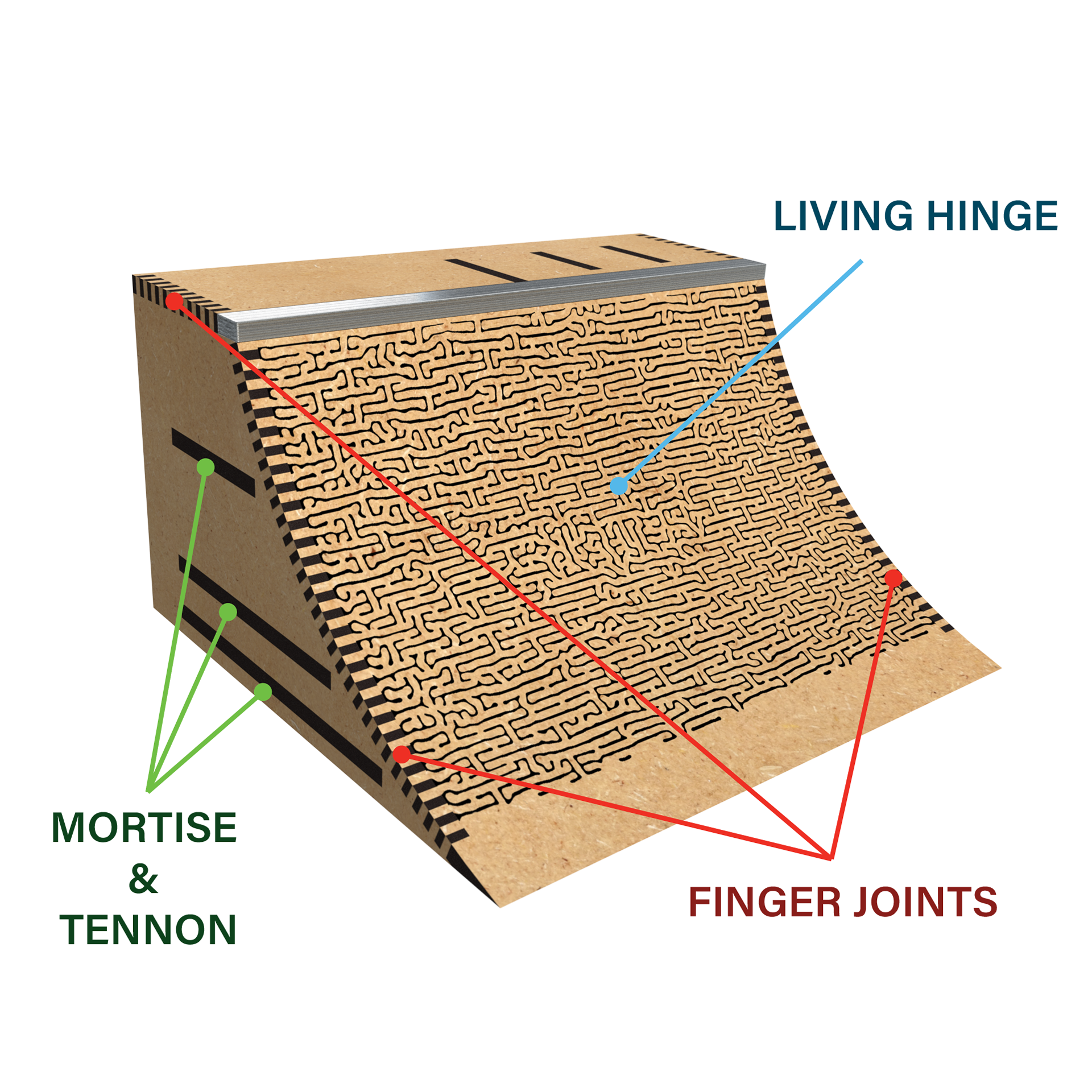
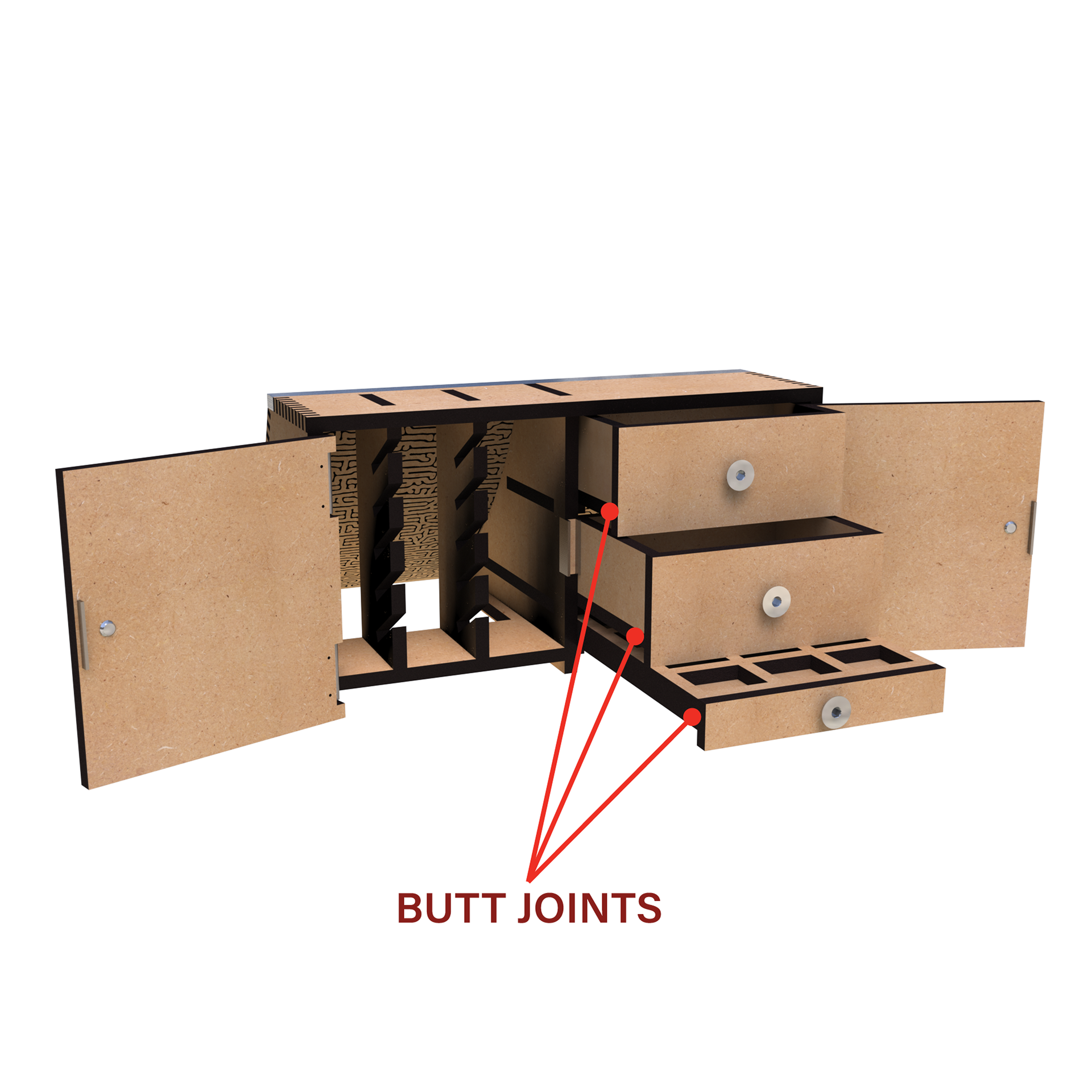
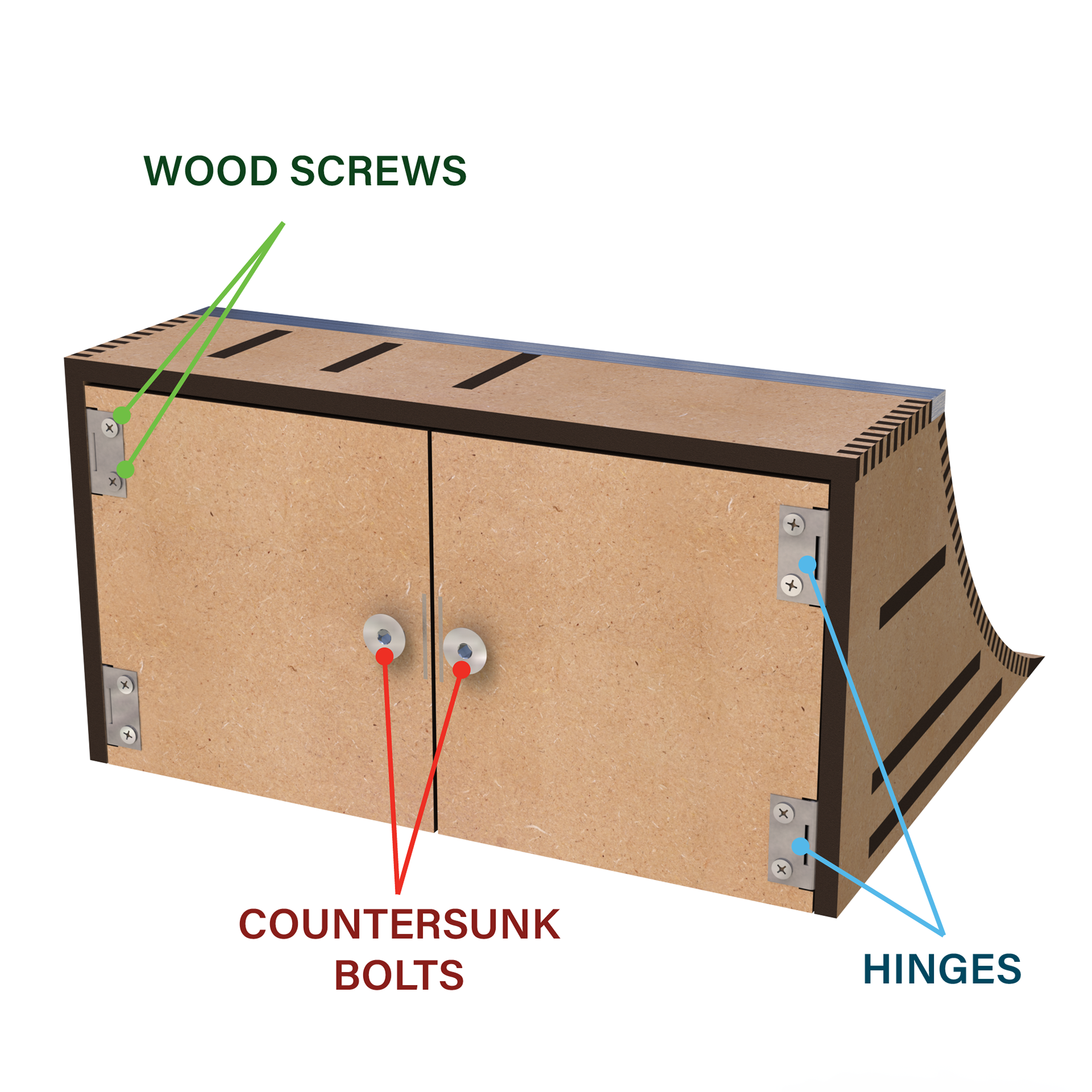
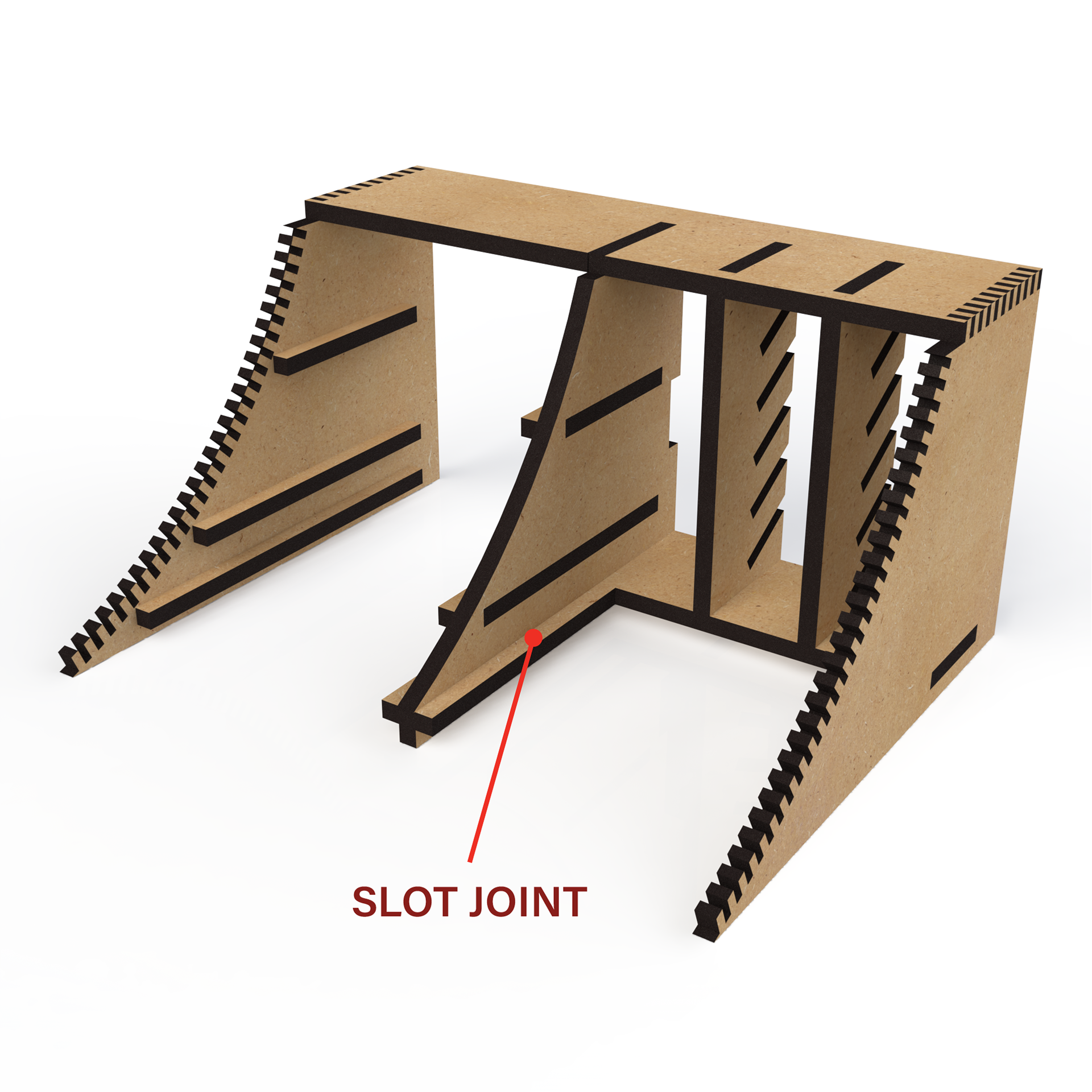

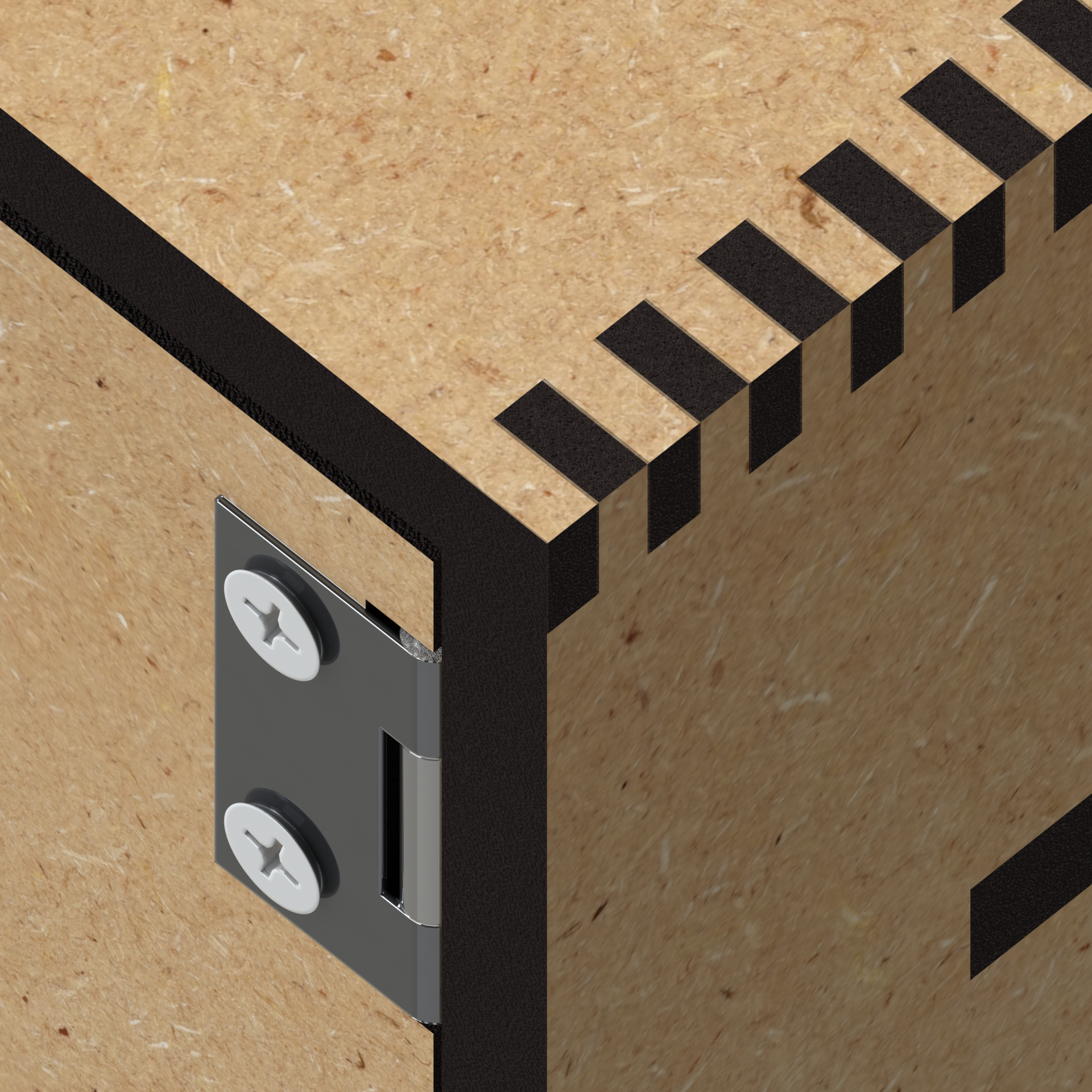
The 2D contours exported from SolidWorks to Illustrator and packed tightly to fit on the single 24"x48" MDF sheet. Many parts had to be tweaked to make maximum use of limited material
I developed a simple tolerance guide to make perfect interference fits for the finger joints and magnets, and so the screws self threaded.
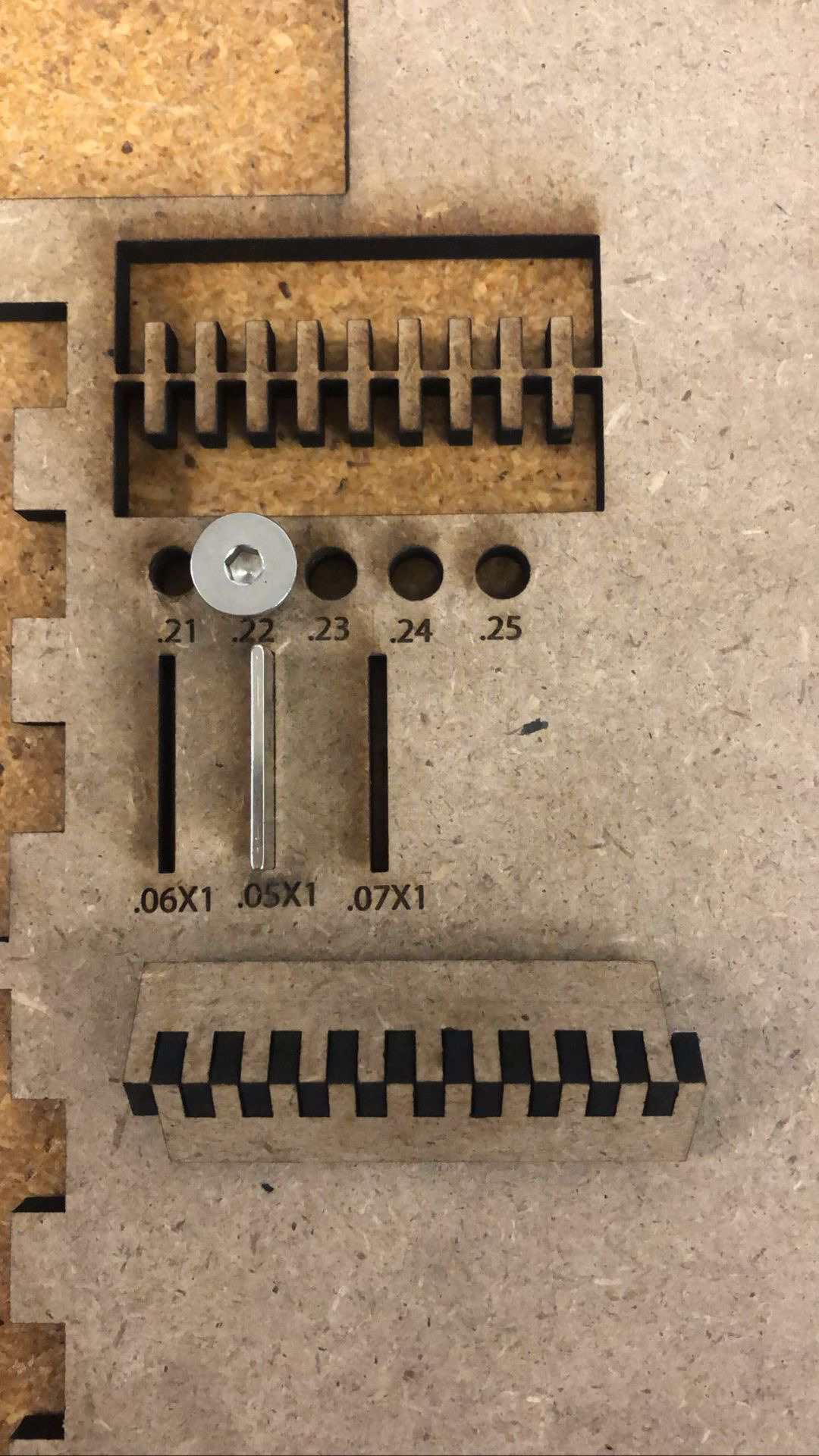

The frame was assembled and glued in place fairly easily using the interlocking tongue/groove and finger joints.
Some shots of the final assembly:


